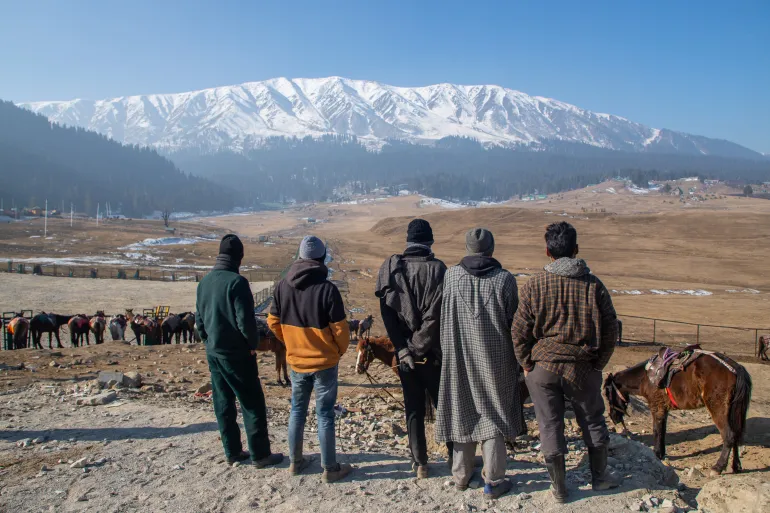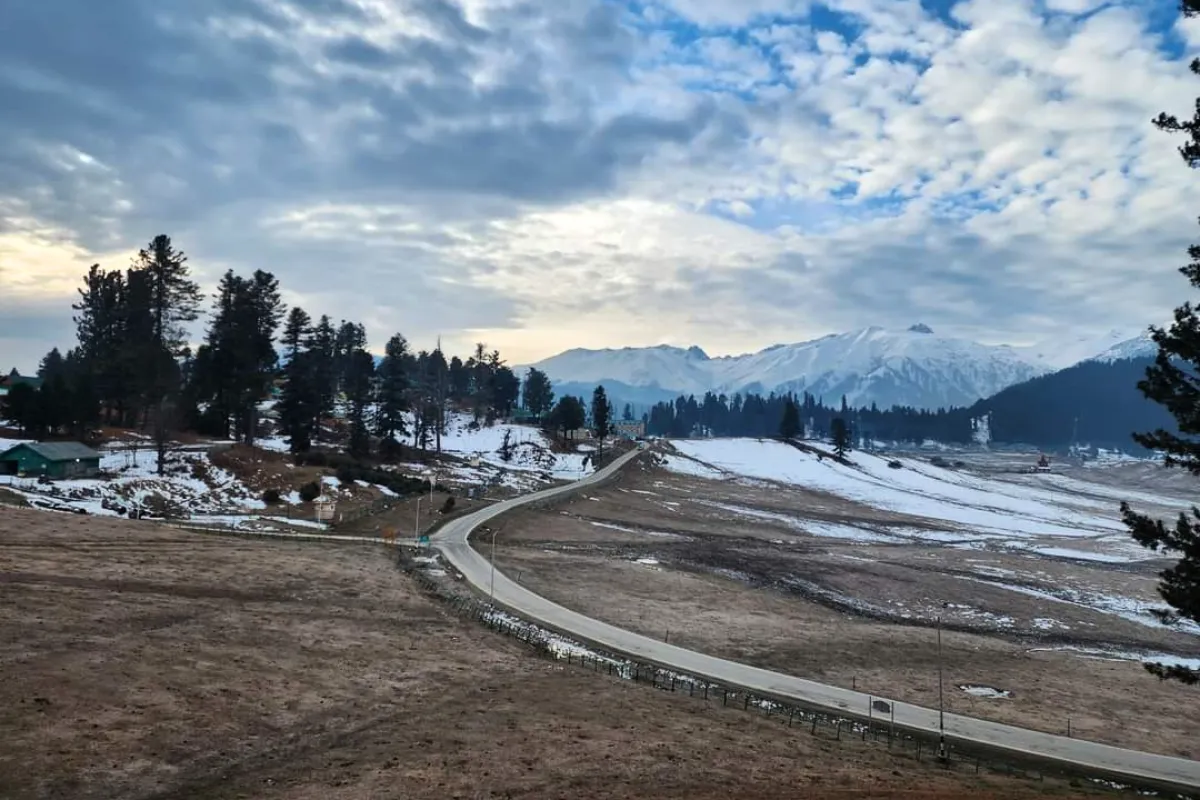The snowless winter of Kashmir has impacted tourism and possibly forced the Khelo India Winter Games to be postponed. But the effects of the absence of snow in the middle and lower Himalayan regions extend beyond travel and recreation. There isn’t the normal white cover anymore. And so are the tens of thousands of ecstatic tourists fighting with snowballs. Where sleds used to glide down snowy slopes this time of the year, horses are dotting a browny, dry landscape.
As the snow replenishes Jhelum, its tributaries, and other wetlands, there may be a water crisis in Jammu and Kashmir this summer. The Indian Meteorological Department’s director in Srinagar, Mukhtar Ahmad, made reference to. According to this, things “could turn dire as there might not be enough water to feed the snow-fed rivers” come summertime. Then there may be long-range apocalyptic situations.
Experts on Snowless Kashmir
“The glaciers will melt more quickly because there will be less or no snowfall, which will prevent the glaciers from being replenished,” stated Mahesh Palawat, vice president of climate change and metrology at Skymet. He warned that if the pattern persisted, snow-fed rivers might eventually dry up.

Popular tourist sites in Jammu and Kashmir, including as Srinagar, Sonmarg, and Gulmarg, have seen little to no snowfall. In Shimla and Manali, Himachal Pradesh, where there hasn’t been any snowfall, the situation is comparable. Not even Auli in Uttarakhand has had any snowfall this far.
The maximum temperature in Srinagar, the capital of Jammu & Kashmir, rose to 15 degrees Celsius on Sunday, January 14. In Delhi, the highest temperature recorded was 16 degrees Celsius. Compare this to that. Not only the Kashmir Valley, but even parts of Ladakh experienced above-average temperatures.
On Sunday, January 14, Drass in Kargil recorded 9.5 degrees Celsius, which was nearly identical to the highest temperature in Jammu, which is located in the lower Shivalik hills. Everyone noted that the Kashmir Valley, particularly the popular tourist destination of Gulmarg, saw very little snowfall this winter. “I’ve never seen Gulmarg during the wintertime so parched. We’re in for a horrible summer if snow doesn’t fall soon.”
Omar Abdullah, a former chief minister of Jammu and Kashmir, wrote on X. In order to contrast the current condition of the highest ski resort in the world with earlier years, he also included a few images. Not much snow fell during Chillai Kalan, the coldest 40-day winter period that began on December 21. There are a number of immediate and long-term effects of the lack of snowfall, such as those on tourism.
Winter Tourism in Limbo, Kashmir
The lack of snow created a dismal image of popular tourist destinations like Gulmarg, Sonmarg, and Pahalgam. The hardest affected people in the area are those who work in the hospitality sector and adventure sports. Winter sports events that were supposed to take place in January have also been canceled in Gulmarg, a hill resort in northern Kashmir that was once blanketed in snow around this time of year.

The Economic Times cited Rouf Tramboo, President of the Travel Agents Association of Kashmir, as saying that Gulmarg had suffered a 70% decrease in travellers this year. The fact that residents of Jammu and Kashmir made significant investments in adventure sports a few years ago has made their problems as traders even worse. They would be unable to recoup their investments due to the blow that the busiest travel season has dealt.
Unfavorable Effects on Waterways and Routines
The absence of snowfall may have an effect on the local and global water cycle. “This winter, the temperature will rise to 15 to 16 degrees Celsius, which will accelerate the glaciers’ over-shrinking. The director of the Indian Meteorological Department in Srinagar, Mukhtar Ahmad, said. In that, it is also putting stress on the glaciers that supply all of the Himalayan rivers.
“The situation in the coming summer will turn dire as there might not be enough water to feed the rivers,” Mukhtar Ahmad remarked. “Jhelum, its tributaries, and other wetlands in Jammu and Kashmir are recharged by the snowfall,” Ahmad said to IndiaToday.describing the reasons why there might be water problems in the Union Territory this summer. Not just the Himalayan region is affected; a deficiency in snowfall may hinder glacier replenishment and ultimately cause rivers fed by snow to dry up. That could, however, occur over time if the pattern of snowfall persists.
“New snow won’t build up on glaciers as a result of reduced or no snowfall. Glaciers will begin melting more quickly as a result of the increasing temperatures.” Vice-President of Meteorology and Climate Change at Skymet, Mahesh Palawat Mentioned.
“There will be negative effects on the rivers that emerge from the glaciers. Because of the glaciers melting quickly, at first, there would be an adequate flow of water. However, Palawat continued, “The rivers will eventually dry up if the trend continues.
Why There Is No Snowfall?

The Kashmir Valley has reported a 79% rainfall shortfall for the month of December 2023, according to weather service data. It was also stated by the Indian Meteorological Department (IMD) that there would be clear skies through January 15.
IMD scientist Soma Sen Roy informed India Today’s Open-Source Intelligence (OSINT) team, “This anomaly could be linked to El Nino, the climatic phenomenon characterized by the warming of sea surface temperatures in the central and eastern Pacific Ocean, which in turn, has a far-reaching impact on global weather patterns.”
The “lack of a strong western disturbance” is another factor contributing to the lack of snow. “The disturbance brings moisture from the Arabian Sea and causes snowfall in the mountains”, said Roy.
Change in Climate: “Early to Say”
Climate change cannot be directly attributed to the current state of affairs. Data for at least the next ten years will be required to determine whether it’s a result of climate change,” Said Skymet’s Palawat. Within. “It can be referred to be the effects of climate change if a similar pattern persists. We’ll have to wait and find out,” he continued.







Be First to Comment